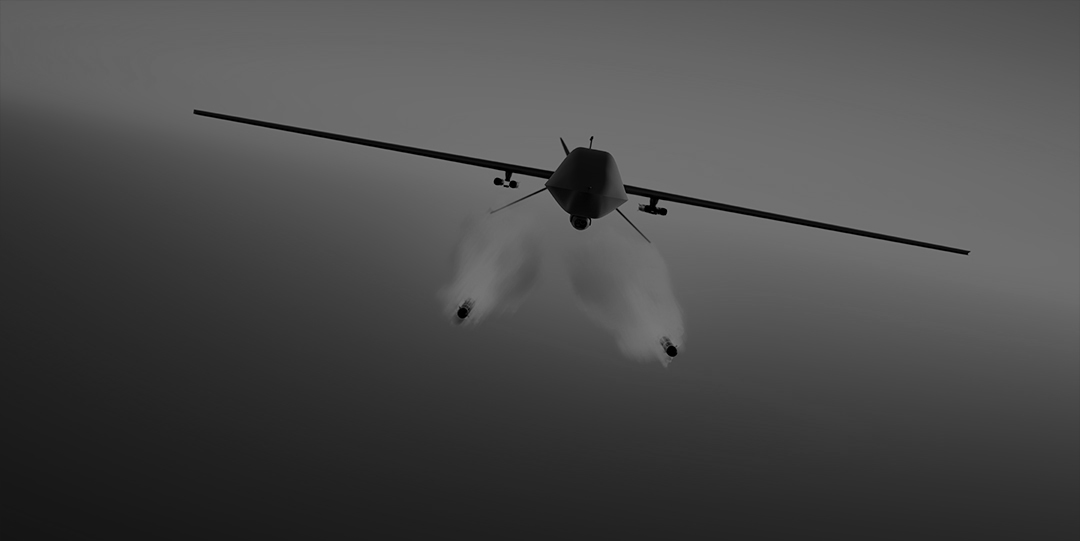Proactively Addressing the Growing Threat of Drone Attacks on High-Value Establishments As drone technology continues to evolve at a rapid pace, high-value establishments find themselves increasingly vulnerable to the sophisticated threats posed by unmanned aerial vehicles (UAVs). The compact size, versatility, and agility of drones make them an appealing tool for threat actors seeking to bypass traditional security measures and inflict harm. These evolving threats necessitate that organizations adopt a proactive and comprehensive security strategy to protect their assets, employees, and operations from potential drone attacks.

Understanding the Threat Landscape
Physical Damage: Drones equipped with explosives or other hazardous materials can be used to cause substantial physical damage to buildings, infrastructure, and valuable assets. The impact of such attacks can range from minor structural damage to catastrophic destruction, depending on the payload and target.
Data Breaches: Drones can be utilized to gain unauthorized access to sensitive information. Equipped with high-resolution cameras and other surveillance tools, drones can capture confidential data, conduct espionage, and intercept communications, leading to severe data breaches.
Disruption of Operations: The mere presence of a drone can disrupt normal operations within an establishment. Drones can interfere with logistical processes, create safety hazards for employees, and cause general panic, leading to operational downtime and financial losses.
Reconnaissance: Threat actors can use drones to conduct detailed reconnaissance of a high-value establishment. By mapping out security measures, identifying vulnerabilities, and gathering intelligence on routines and procedures, drones can facilitate more sophisticated and targeted attacks in the future.
Cyber-Attacks: Advanced drones equipped with cyber tools can potentially breach an establishment's digital defenses. These drones can exploit wireless networks, inject malware, and initiate cyber-attacks, compromising the integrity and security of critical digital systems.
Implementing a Comprehensive Security Strategy Given the multifaceted nature of drone threats, high-value establishments must implement a robust and multi-layered security strategy. This strategy should encompass advanced technology, robust security protocols, and well-trained personnel to effectively mitigate the risk of drone attacks.
Advanced Technology
Detection Systems: Utilizing radar, radio frequency (RF) sensors, acoustic sensors, and optical systems, establishments can detect the presence of unauthorized drones. Advanced detection systems can identify drones by their unique RF signatures, flight patterns, and visual characteristics, providing early warning of potential threats. Anti-Drone Measures: Establishments should deploy a range of anti-drone technologies to neutralize threats. These include jamming devices that disrupt drone communications, GPS spoofing tools that misguide drones, and directed-energy weapons such as lasers to disable or destroy drones. Surveillance and Monitoring: Integrating drones into the security apparatus can enhance surveillance capabilities. Establishments can use their own drones for perimeter monitoring, rapid response, and continuous aerial surveillance to complement ground-based security measures.
Innovation and Adaptation: Investing in research and development to innovate new anti-drone technologies and adapt existing measures is crucial. Establishments should explore emerging technologies such as artificial intelligence and machine learning to enhance detection and response capabilities. Threat Intelligence: Staying informed about the latest trends, tactics, and techniques used by threat actors is vital. Establishments should leverage threat intelligence platforms and engage in information sharing networks to anticipate and counteract emerging threats.
Scenario Planning: Conducting regular drills and simulations based on various threat scenarios helps prepare personnel for real-world incidents. Scenario planning enables establishments to refine their response strategies and ensure readiness for diverse drone-related threats.
Robust Security Protocols
Access Control: Establishments should enforce strict access control measures to prevent unauthorized drones from entering sensitive areas. This includes geofencing, establishing no-fly zones, and implementing aerial exclusion zones around critical infrastructure.
Incident Response Plans: A well-defined incident response plan is crucial for dealing with drone threats. This plan should outline specific actions to be taken when a drone is detected, including communication protocols, evacuation procedures, and engagement rules for neutralizing the threat.
Regulatory Compliance: Adhering to national and international regulations regarding drone usage and airspace management is essential. Establishments should stay informed about regulatory changes and ensure their security measures comply with legal requirements.
Training and Personnel
Specialized Training: Security personnel should receive specialized training in drone threat detection and response. This includes recognizing drone activity, operating anti-drone technologies, and executing incident response plans effectively.
Continuous Evaluation: Regular assessments of security protocols and technologies are necessary to ensure they remain effective against evolving drone threats. Continuous evaluation helps identify weaknesses and opportunities for improvement.
Collaboration: Establishments should collaborate with law enforcement, government agencies, and other organizations to share intelligence, best practices, and resources. Collaborative efforts enhance the overall security posture and provide a unified response to drone threats.
Staying Ahead of Evolving Threats
The dynamic nature of drone technology and its associated threats requires ongoing vigilance and adaptability. High-value establishments must prioritize continuous evaluation, adaptation, and collaboration to stay one step ahead in this evolving threat landscape.
Innovation and Adaptation : Investing in research and development to innovate new anti-drone technologies and adapt existing measures is crucial. Establishments should explore emerging technologies such as artificial intelligence and machine learning to enhance detection and response capabilities.
Threat Intelligence : Staying informed about the latest trends, tactics, and techniques used by threat actors is vital. Establishments should leverage threat intelligence platforms and engage in information sharing networks to anticipate and counteract emerging threats.
Scenario Planning : Conducting regular drills and simulations based on various threat scenarios helps prepare personnel for real-world incidents. Scenario planning enables establishments to refine their response strategies and ensure readiness for diverse drone-related threats.